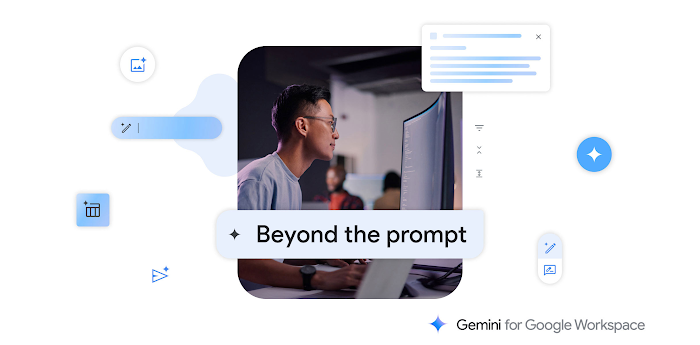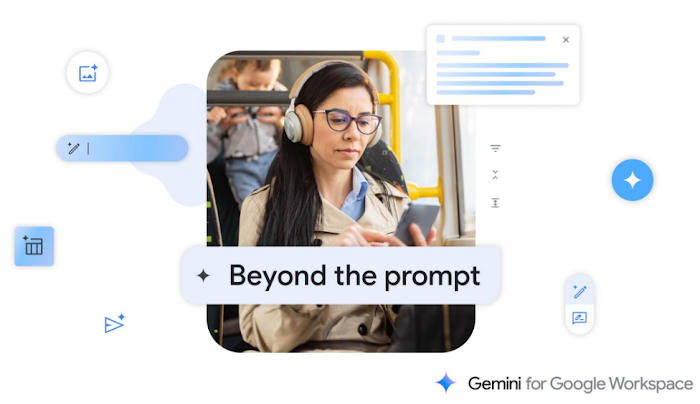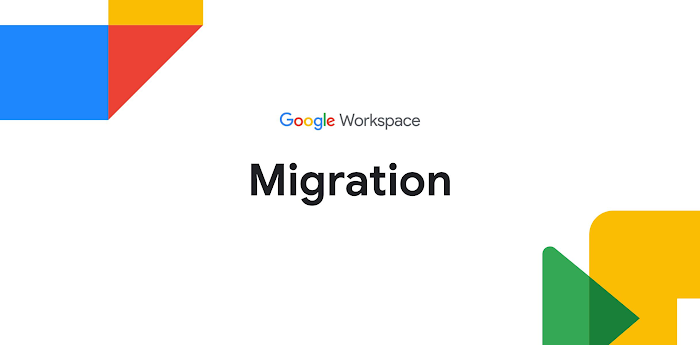Not all collaboration is equal—here’s what it looks like in G Suite

Birkan Icacan
Product Manager, G Suite, Google Docs
Here's how G Suite helps businesses move beyond simply collaborating in “real-time."
Try Google Workspace at No Cost
Get a business email, all the storage you need, video conferencing, and more.
SIGN UPIf you tried to describe what good collaboration looks like in an organization, you might credit the people involved in a project. But what about the technology? Would you be able to pinpoint where it helped (or hindered) your team in that process? This is arguably just as important.
When it comes to cloud technology, not all collaboration is equal. We’ve designed G Suite with a specific vision in mind: to help businesses reimagine what work looks like with the help of flexible, cloud-native, intelligent tools. In this post, I’ll walk you through examples of where G Suite helps businesses move beyond simply collaborating in “real-time.”


Let’s start with document creation.
According to our internal research, 76% of the time that businesses spend working in Google Docs is spent on collaborative work. You might think to yourself, what does that mean? We define collaboration in the Docs editors according to five behaviors that we see employees exhibit.
1. Editing a document together. In Docs, Sheets and Slides, you can work simultaneously in documents with other collaborators, creating a single record of changes.
Taking it a step further: we’ve brought the power of G Suite’s collaboration to other *Office* tools. Now you can edit, comment and use features like Explore in Microsoft Office files, just like you can in G Suite files.
2. Seeing changes in a document. Because G Suite is cloud-native, all changes are recorded in version history (File > Version history), so you can see a holistic view of edits to a document and even restore previous versions with a click.
Taking it a step further: we make it possible to see edit history for a particular cell within a spreadsheet, or to compare changes in documents (We’re looking at you, legal teams.).
3. Giving and receiving feedback. Commenting in G Suite is not just a feature, it’s essential to how employees share and receive actionable feedback.
Taking it a step further: with the help of dynamic email, commenting in Docs, Sheets and Slides integrates with Gmail, so you can address comments directly in email without having to switch tabs to resolve.
4. Assigning and completing tasks. It’s easy to assign tasks to specific owners via commenting in G Suite.
Taking it a step further: G Suite uses artificial intelligence (AI) to speed up collaboration. For example, AI in Docs can auto-detect tasks and suggest people to assign action items to, so you don’t have to worry about sending a separate email with to-dos.
5. Sharing with confidence. Once you’re ready to share your documents, built-in sharing permissions in G Suite let you control who can see what information (both internally and externally).
Taking it a step further: You can set expiration dates for a specific user’s access to files saved in Drive, Docs, Sheets and Slides. You can also enforce FIDO security keys for added protection


Next, communicating effectively.
Speaking of sharing ideas, communication is also not a one-size-fits-all approach; people need flexible ways to communicate with their colleagues, from email to chat to face-to-face video conferencing.
First, email. Email is core to how businesses operate and at the heart of many workflows. This is why more than 5 million paying businesses rely on Gmail to keep their work moving forward.
Taking it a step further: it’s easy to view email as simply a written record of work, but we’ve built Gmail to do so much more. Through the help of AI, Gmail can remind you to reply to colleagues, help you prioritize work, or even draft emails quicker. Plus, it blocks 99.9 percent of spam, phishing and malware from ever reaching our inbox.
Second, chat. Outside of email, teams need quick, informal ways to communicate when the project warrants. That’s where Hangouts Chat can help—with dedicated, virtual rooms to house projects over time (plus threaded conversations), it’s easy to track progress and follow up on tasks.
Taking it a step further: Because Chat integrates with other G Suite apps like Drive, you don’t have to flip back and forth to access files. Chat also comes equipped with more than 25 AI-powered bots to help you speed up workflows in finance, human resources, CRM, project management and more. Soon, Chat will deeply integrate with Gmail itself, making it easy to access the right communication channel from a single place.
Third, face-to-face. Nothing beats face-to-face collaboration with colleagues. We’re human, after all. That’s why we’ve built Hangouts Meet, an all new version of our video conferencing software, to help you collaborate with up to 250 people on a single call.
Taking it a step further: Meet goes beyond typical video conferencing solutions, by offering automatic live captioning, and even live streaming for up to 100,000 people. And Hangouts Meet Hardware can reduce the burden on IT support teams because it’s smart enough to detect and troubleshoot issues on its own with the power of AI.
Measuring impact
Defining “good” collaboration in an organization can be tricky. Anecdotally, it’s perhaps more easily defined by identifying when something doesn’t work well, than when it does. We think the first step toward improving internal collaboration is to have more visibility into how people work together, so you can equip them with the right tools. For this reason, our team has set out to help businesses quantify collaboration.
With tools like the Activity Dashboard, which lets users see how others have interacted with their documents, and Work Insights, which gives IT Admins a “birds-eye” view of G Suite usage within their organization, companies can start to identify patterns and define collaboration more concretely.



